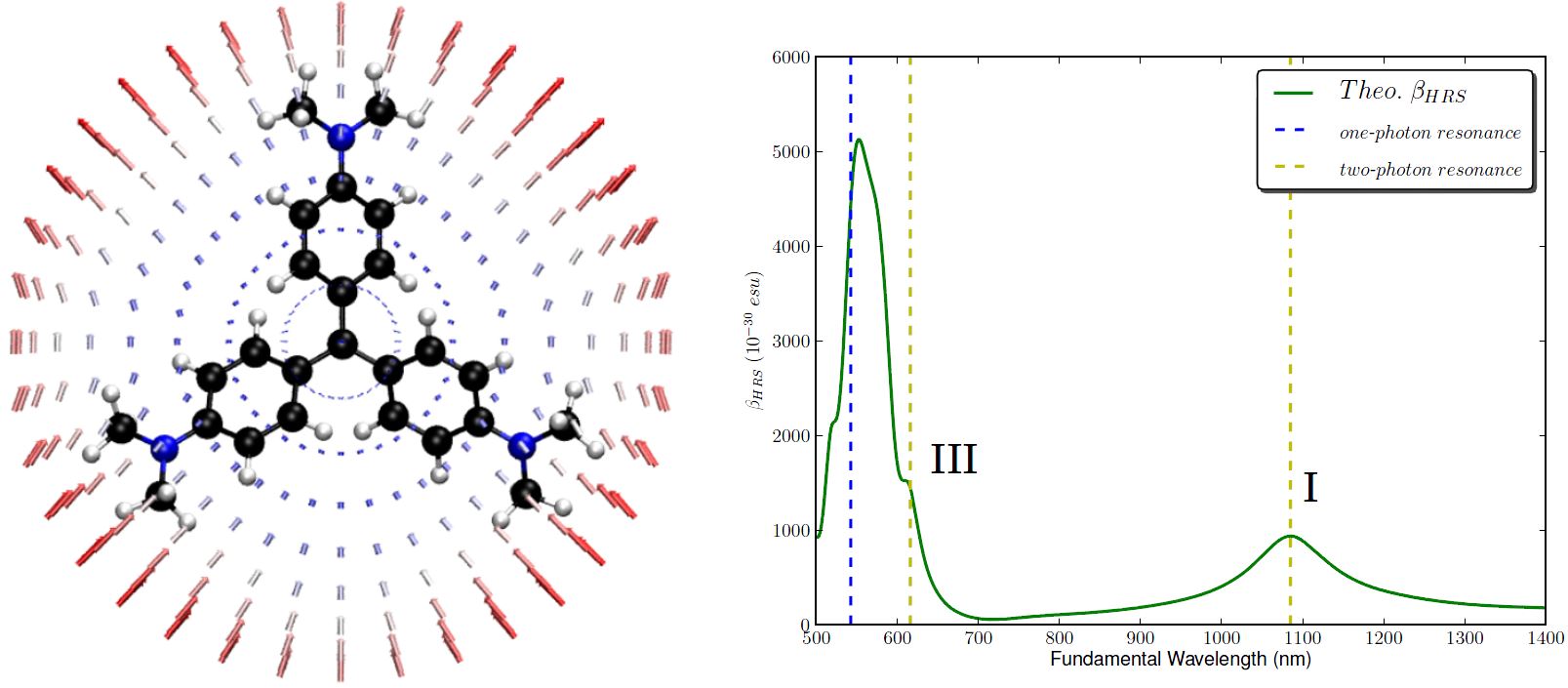Resonance hyper-Rayleigh scattering of molecules and metal clusters
Simulations of resonance hyper-Rayleigh scattering (HRS) for molecules and metal clusters in both resonance and off-resonance regions have been studied using TDDFT, with a new implementation by the ADF development groups of Lasse Jensen and Jochen Autschbach. An efficient algorithm based on damped quadratic response theory using the (2n+1) rule allows for studying the nonlinear optical properties (NLO, first-order hyperpolarizability β) of materials near one- and two-photon resonances.
Small silver clusters are shown to display strong two-photon enhanced HRS, making them interesting candidates for desiging new NLO materials.

Left: unit sphere representation of resonance β for crystal violet (CV) at fundamental wavelength ~1084 nm (red: highest intensity of β, blue: lowest intensity of β). Right: simulated HRS for CV in the gas phase (region I: a two-photon resonance with S1, region III: a combined two-photon resonance with S3 and one-photon resonance with S1)
Z. Hu, J. Autschbach, and L. Jensen, Simulation of resonance hyper-Rayleigh scattering of molecules and metal clusters using a time-dependent density functional theory approach J. Chem. Phys., 141, 124305 (2014).
Key conceptsADF nanoscience NLO TDDFT